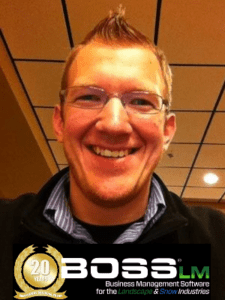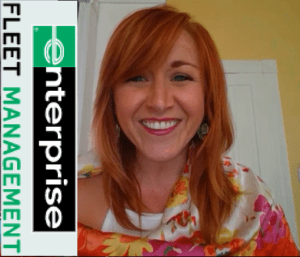Not All Dollars Are Created Equal (Vol. 2)
This is our second installment in a series called, “Not All Dollars Are Created Equal.” The premise is that we’ve all heard the phrase, “A dollar is a dollar is a dollar,” and it simply isn’t true – especially in landscape management! There are targeted business areas where a focused investment actually produces multiplied impact in driving your net profit from the industry-average 5-7% up toward the industry-leading 10-12%+. (Read Vol. 1 here!) Today we’re taking a look at fleet and equipment overhead management, with industry experts weighing in on the proven method to get a better fleet for 20% less cost. Take a look.
…
One of the biggest overhead line items for landscape and snow professionals is the operations-critical “fleet and equipment” bucket. Without careful calibration, multiple points of net profit can sink here, either by overspending on over-sized, over-powered assets or by underspending and living at the mercy of inadequate productivity or uncontrollable repair expenses.
Jessi Gross with Enterprise Fleet Management (yes, they do more than rentals!) advises businesses looking for control and efficiency to shift their strategy to “focus on the total cost of ownership (TCO) of the fleet.” Begin with the three “hard costs”: annual fuel spend, annual maintenance spend, and loans and acquisitions. “You tend to see a pattern… either focused on acquisition, getting whatever vehicles you can to keep the fleet going, or (if you’re strapped for cash) constant repair band-aids while cash pours into maintenance and fuel on depreciating assets… Even if you aren’t buying new fleet every year, you’re still spending thousands of dollars to maintain that aging fleet.”
Together with what we’re spending is an audit of what’s receiving that spend. Develop a fixed asset listing – a complete inventory of your fleet, handheld equipment, and heavy equipment, including year, make, model, and VIN. Operations can estimate a reasonable replacement cost and current market value for each piece. Finance can merge monthly loan payments into this TCO picture. (TIP: Finance teams can also use this listing in a “fixed asset depreciation” model, writing off the loss in value of your fleet and equipment each year against what your company owes in taxes. A certified accountant can help see if this works for you.)
With current state defined, lets define “best-case” – a right-typed fleet need. This is where one of the two “tricks of the trade” comes in. Rather than just looking at full-time payroll headcount, tools for labor forecasting and business management software can determine precisely how many of each team type you need for your contract workload. Come up with your ideal vehicle type and equipment listing per team type, then multiply accordingly. “A lot of times what we find is that people are just purchasing whatever vehicles are on the lot,” Gross explains. “Why pay for that higher trim level when you really just need a work truck? Do we really want to buy 3/4-ton trucks for 1/2-ton truck work? These are all places to save,” Gross explains.
Finally, scaling this assessment through a fleet lifecycle plan yields an average yearly spend. “We want to find that sweet spot,” Gross envisioned, “where high maintenance and high fuel start to creep up, and let’s make a plan to replace the vehicle before then – selling it to make money off its equity rather than holding onto the fleet where it starts to cost you more.” The same follows for equipment; most manufacturers either share average lifespan or will tip their hand about half-life in the form of how many years of warranty they offer. For each type of asset, divide how many you own by its average lifespan years, then multiply that quantity by the replacement cost. Voila! This per-year average spend can then be scaled up for growth or down for recession.
The other industry trick? …getting started. Sure, the more years a company is on this model, the higher the percentage of your fleet that moves from volatility into predictability, and the baseline overhead item stabilizes; but the first year can be ugly. Many companies involve an external consulting partner who specializes in this field, such as Enterprise, to help get started. “A large part of our value proposition is helping [commercial companies] wrap your arms around all of your transportation needs. When a company comes from a purely reactive, band-aid, ‘use what we can’ approach,” Gross details, to this kind of holistic, TCO model with Enterprise, “the average is that companies save between 15% and 22%.”
Gross offered two closing encouragements, the first to advise cash-strapped companies that options exist. “Because of our private financing, we have a ton of different options when it comes to how to get started. Zero dollars down means nothing to us. I like that, because then I get to be really creative to find how to get a bigger win for them anyways. That matters a lot in today’s climate.” Some financiers, such as Enterprise, leverage options based on the total value of a fleet and the equity a company has in it, enabling clients to get started with little or no cash out-of-pocket.
Her last word was to implore that companies “don’t forget there are (also) tremendous soft cost savings that go into fleet management. It’s hard to put a cost to your improved morale; to employees who speak [to other local talent] of having nicer and safer vehicles that are up to standard; that statistics show take-home company car policies are treated better; that labor turnover goes down; that your brand representation increases… The power of image, and the power of safety, goes a long way for the trustworthiness between a public and a business.”
“Fleet management is so much more than just vehicles. It’s peoples’ livelihoods. It’s businesses’ histories,” Gross closed.
And, through the right combination of forecasting, strategy, and execution, it’s a place to reclaim your net profitability to invest more purposefully and peacefully.
===

David Rempfer is a veteran operations leader of multimillion snow operations and one of less than 300 professionals in North America to be both ASCA Certified and SIMA Executive CSP certified. He now serves as an Executive Consultant with BossLM Software to the landscape and snow industries and can be reached via David.Rempfer@BossLM.com.


